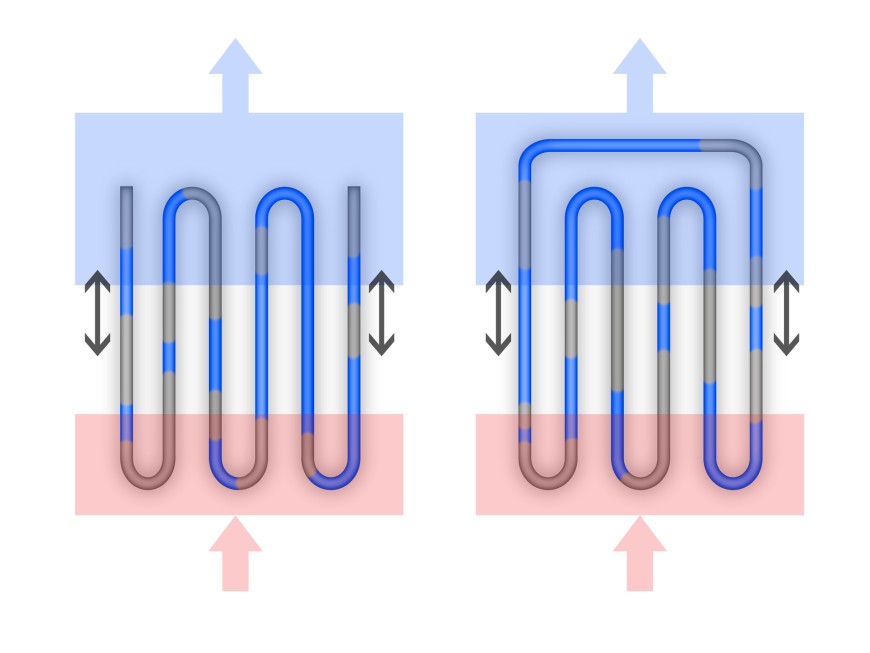Flow regimes and thermal performance in PHPs
New publication in Applied Thermal Engineering
2018/12/20
Pulsating heat pipes (PHP) are capable of removing high localized heat fluxes to provide the necessary temperature uniformity, i.a. in electronic components. Researchers from the TTD and the Indian Institute of Technology Madras have investigated the performance of a flat plate PHP and a capillary tube PHP. The results have been published in Applied Thermal Engineering.

Pulsating heat pipes consist of a meandering capillary tube partially filled with a liquid. Due to the surface tension the liquid forms plugs and vapor bubbles. When the temperature difference between evpaorator and condensor section exceeds a certain threshold, the bubbles and plugs begin to move back and forth. The oscillation is quite strong and the liquid plugs penetrate both into condenser and evaporator. Thus, heat is transferred from the evaporator to the condenser section.
Researchers from the TTD and the Indian Institute of Technology Madras have experimentally investigated the performance of two types of PHP namely, a flat plate pulsating heat pipe (FPPHP) and a capillary tube pulsating heat pipe (CTPHP). In the compared setups the latter shows better thermal performance than FPPHP due to the presence of lateral conduction, the researchers found.
A. Takawale, S. Abraham, A. Sielaff, P. Sinha Mahapatra, A. Pattamatta, P. Stephan: A comparative study of flow regimes and thermal performance between flat plate pulsating heat pipe and capillary tube pulsating heat pipe, Applied Thermal Engineering 149 (2019), DOI: 10.1016/j.applthermaleng.2018.11.119

